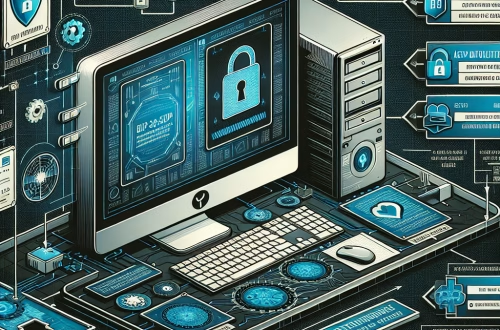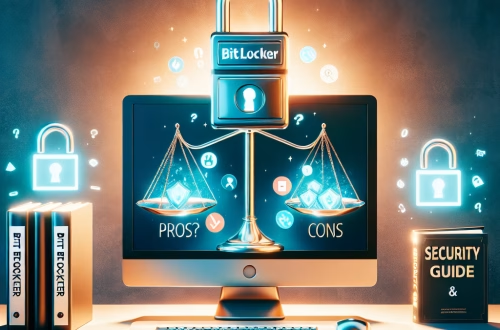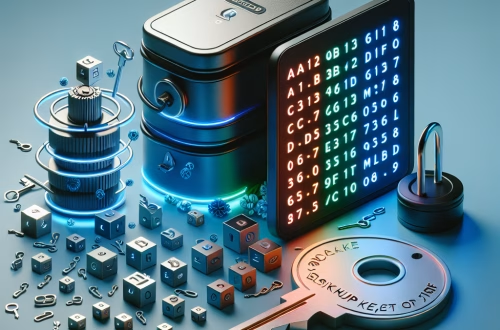How Secure Is BitLocker To Go Explained:
BitLocker To Go is a feature of Microsoft’s BitLocker Drive Encryption designed to encrypt removable drives, such as USB flash drives and external hard disks. Its technical purpose is to protect data on portable storage devices from unauthorized access in case of loss or theft. BitLocker To Go uses Advanced Encryption Standard (AES) encryption with 128-bit or 256-bit keys, ensuring robust data security. It is commonly triggered when a removable drive is connected to a Windows device, requiring a password or recovery key to unlock the drive. This feature is particularly useful for businesses and individuals managing sensitive data on portable storage.
What This Means for You:
- Immediate Impact: BitLocker To Go ensures that your removable drives are encrypted, protecting sensitive data from unauthorized access. However, forgetting the password or losing the recovery key can lead to permanent data loss.
- Data Accessibility & Security: Always store your recovery key in a secure location and use strong passwords to maximize data security while maintaining accessibility.
- System Functionality & Recovery: Ensure compatibility with non-Windows systems by formatting the drive with exFAT or FAT32, as BitLocker To Go encryption is primarily designed for Windows environments.
- Future Outlook & Prevention Warning: Regularly back up your recovery key and update your BitLocker encryption settings to stay ahead of evolving security threats.
How Secure Is BitLocker To Go:
Solution 1: Managing and Storing Recovery Keys
BitLocker To Go requires a recovery key to unlock the encrypted drive in case of password loss. To manage this key, open the BitLocker management tool by typing Manage BitLocker in the Windows search bar. Locate the encrypted drive and select Backup your recovery key. Save the key to a secure location, such as a password manager or a printed document stored in a safe. Avoid storing the key on the same drive to prevent permanent data loss.
Solution 2: Resetting or Changing the Password
If you forget the password for a BitLocker-encrypted drive, you can reset it using the recovery key. Open the BitLocker management tool, select the encrypted drive, and choose Change password. Enter the recovery key when prompted and set a new password. Ensure the new password is strong and securely stored to avoid future lockouts.
Solution 3: Decrypting the Drive
If you no longer need encryption, you can decrypt the drive to restore normal functionality. Open the BitLocker management tool, select the encrypted drive, and choose Turn off BitLocker. This process may take time depending on the drive size and system performance. Decryption ensures compatibility with non-Windows systems but removes the security benefits of BitLocker.
Solution 4: Advanced Troubleshooting
If BitLocker To Go fails to unlock the drive, check for hardware or software conflicts. Ensure the drive is properly connected and formatted with a compatible file system (NTFS, exFAT, or FAT32). Update Windows to the latest version to address known issues with BitLocker. For advanced troubleshooting, use the Command Prompt with administrative privileges and execute manage-bde -status to check the encryption status.
Solution 5: Data Recovery Options
If all attempts to unlock the drive fail, data recovery tools may help retrieve unencrypted files. However, BitLocker encryption makes direct recovery impossible without the password or recovery key. Use professional data recovery services as a last resort, but be prepared for potential costs and limited success due to the strength of AES encryption.
People Also Ask About:
- Can BitLocker To Go be used on macOS or Linux? BitLocker To Go is primarily designed for Windows, but third-party tools can unlock encrypted drives on macOS or Linux.
- What happens if I lose my BitLocker recovery key? Losing the recovery key makes it nearly impossible to access the encrypted data without professional assistance.
- Is BitLocker To Go compatible with all USB drives? It works with most USB drives formatted with NTFS, exFAT, or FAT32, but some older drives may not support encryption.
- Does BitLocker To Go slow down drive performance? Encryption may slightly slow down read/write speeds, but the impact is minimal on modern hardware.
- Can I use BitLocker To Go on shared drives? Yes, but ensure all users have access to the password or recovery key to avoid lockouts.
Other Resources:
- Microsoft’s Official BitLocker Documentation
- TechRepublic: Enabling BitLocker on Removable Drives
- How-To Geek: Using BitLocker on Removable Drives
Suggested Protections:
- Always store the recovery key in a secure, separate location.
- Use strong, unique passwords for BitLocker-encrypted drives.
- Regularly update Windows to ensure compatibility and security.
- Format drives with exFAT or FAT32 for cross-platform compatibility.
- Enable automatic backups of the recovery key to a Microsoft account.
Expert Opinion:
BitLocker To Go is a highly effective tool for securing portable storage, but its strength hinges on proper key management. Organizations and individuals must prioritize password and recovery key storage to avoid catastrophic data loss. As cyber threats evolve, BitLocker remains a critical component of modern data security strategies.
Related Key Terms:
- BitLocker To Go
- AES encryption
- Recovery key management
- USB drive encryption
- Data security
- Windows encryption tools
- BitLocker troubleshooting
*Featured image sourced by Pixabay.com





